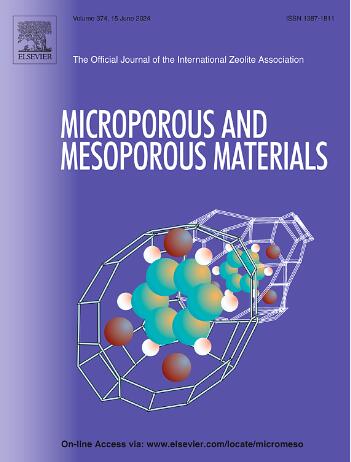One-step synthesis of aluminum dross-derived MIL-53(Al) as an aniline adsorbent
IF 4.8
3区 材料科学
Q1 CHEMISTRY, APPLIED
引用次数: 0
Abstract
Aluminum dross, an industrial waste product generated during the smelting and recycling of aluminum, is used in various industries; however, its application is limited. Metal–organic frameworks (MOFs), next-generation porous materials comprising metals and organic likers, offer tunable properties, including pore structure (shape and size), hydrophobicity, hydrophilicity, and stability, making them versatile for various applications. This study successfully achieved the one-step synthesis of MIL-53(Al), an MOF, using aluminum dross as a starting material for the first time. The dross-derived MIL-53(Al) exhibited high crystallinity, similar to that of conventional MIL-53(Al). It was further evaluated as an adsorbent for aniline, a compound widely used in chemical and pharmaceutical industries but harmful to human health and ecosystems. Liquid-phase adsorption experiments demonstrated that dross-derived MIL-53(Al) achieved an adsorption capacity similar to that of conventional MIL-53(Al), primarily owing to π‒π and hydrogen bonding interactions with aniline. The adsorption isotherm of dross-derived MIL-53(Al) conformed to the Langmuir model, indicating that the primary adsorption sites for aniline were its micropores. Furthermore, this MIL-53(Al) retained its adsorption capacity after up to four regeneration cycles using calcination. Thus, this study successfully synthesized MIL-53(Al) using aluminum dross as a precursor and demonstrated its potential effectiveness as a water purification agent.

求助全文
约1分钟内获得全文
求助全文
来源期刊

Microporous and Mesoporous Materials
化学-材料科学:综合
CiteScore
10.70
自引率
5.80%
发文量
649
审稿时长
26 days
期刊介绍:
Microporous and Mesoporous Materials covers novel and significant aspects of porous solids classified as either microporous (pore size up to 2 nm) or mesoporous (pore size 2 to 50 nm). The porosity should have a specific impact on the material properties or application. Typical examples are zeolites and zeolite-like materials, pillared materials, clathrasils and clathrates, carbon molecular sieves, ordered mesoporous materials, organic/inorganic porous hybrid materials, or porous metal oxides. Both natural and synthetic porous materials are within the scope of the journal.
Topics which are particularly of interest include:
All aspects of natural microporous and mesoporous solids
The synthesis of crystalline or amorphous porous materials
The physico-chemical characterization of microporous and mesoporous solids, especially spectroscopic and microscopic
The modification of microporous and mesoporous solids, for example by ion exchange or solid-state reactions
All topics related to diffusion of mobile species in the pores of microporous and mesoporous materials
Adsorption (and other separation techniques) using microporous or mesoporous adsorbents
Catalysis by microporous and mesoporous materials
Host/guest interactions
Theoretical chemistry and modelling of host/guest interactions
All topics related to the application of microporous and mesoporous materials in industrial catalysis, separation technology, environmental protection, electrochemistry, membranes, sensors, optical devices, etc.
 求助内容:
求助内容: 应助结果提醒方式:
应助结果提醒方式:


